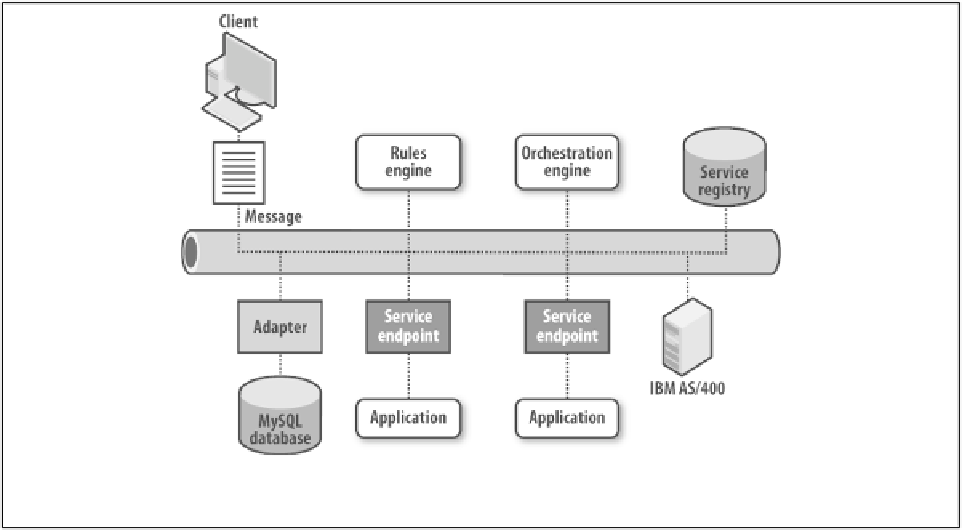Java Reference
In-Depth Information
maintenance overhead. Because the bus abstracts and mediates connected nodes, some flexib-
ility is achieved; if you want to swap out one application for another one, you can do so with
minimal disruption to the overall solution. This is illustrated in
Figure 14-1
.
Figure14-1.The role of the ESB in SOA
Features of an ESB
ESBs are the backbone of SOA. They provide the opportunity to really make your entire IT
landscape visible, integrated, and ready to participate in new composite applications across
EAI, supply chain, B2B, portals, and more. They allow you the flexibility to not rip and re-
place existing systems that are functioning properly and represent a considerable investment
of intellectual capital. One colleague of mine is fond of this definition of “legacy applica-
tions”: they're the stuff that works. To protect this investment, and yet still allow you to mod-
ernize as necessary and integrate with newer applications, the ESB does not require that you
install software at each node that you want to integrate. An ESB is often lightweight, and of-
fers a centralized system for deploying components that can scale independently.
An ESB allows you to send messages between multiple services in a distributed environment,
offering a layer of indirection that provides a rich set of mediating features for those messages.
An ESB is typically platform-independent in the sense that it will run on a range of operating
systems and is often neutral with respect to application server and programming language. The
bus allows you to connect native Java applications, .NET applications, object request brokers,
and legacy platforms.

